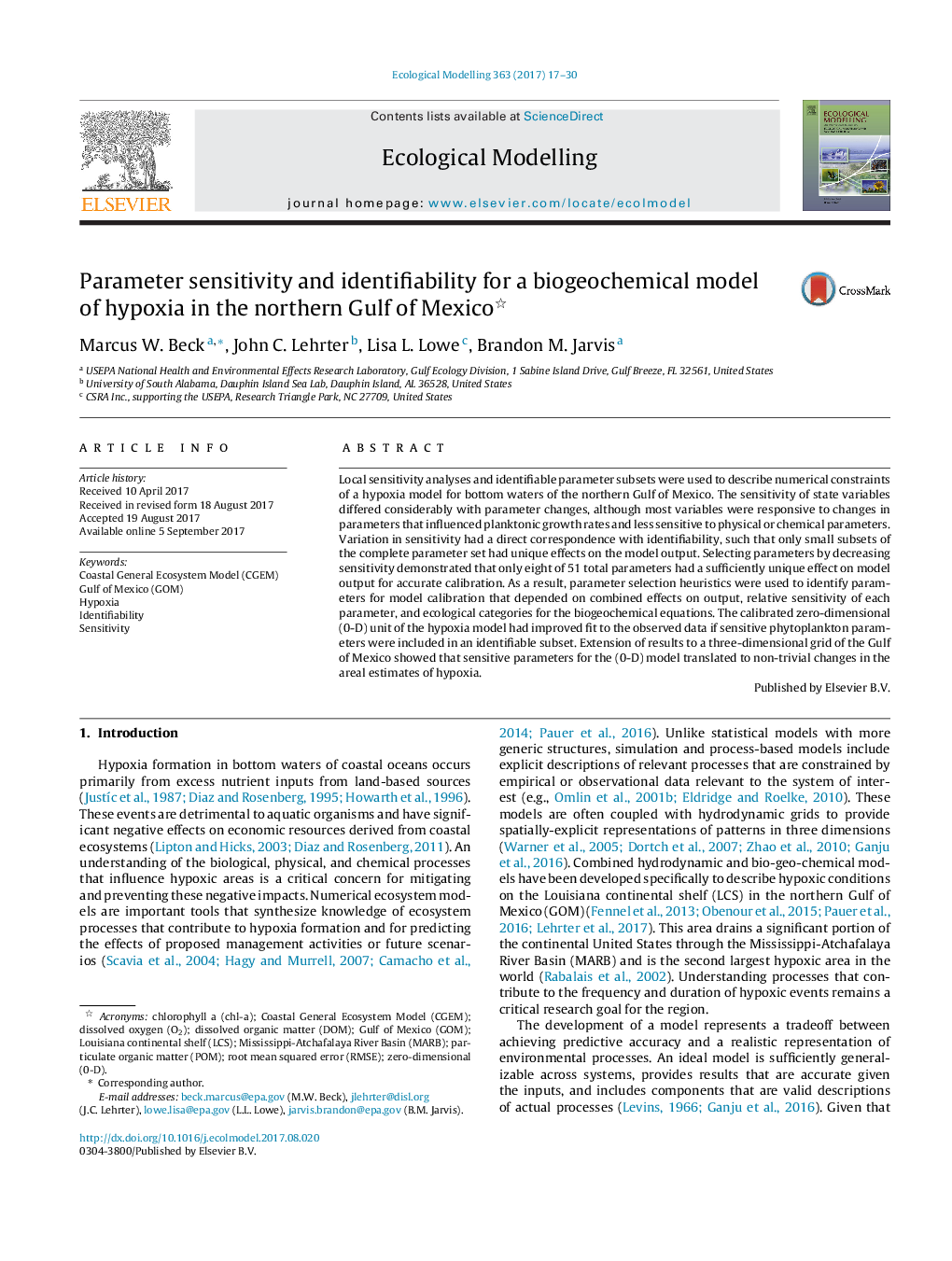| Article ID | Journal | Published Year | Pages | File Type |
|---|---|---|---|---|
| 5742010 | Ecological Modelling | 2017 | 14 Pages |
â¢Parameter sensitivity was evaluated for a biogeochemical model of coastal hypoxia.â¢Eight state variables described by the model were evaluated.â¢Selection heuristics were developed for choosing identifiable parameter subsets.â¢Calibration with subsets showed tradeoffs in sensitivity and numerical certainty.
Local sensitivity analyses and identifiable parameter subsets were used to describe numerical constraints of a hypoxia model for bottom waters of the northern Gulf of Mexico. The sensitivity of state variables differed considerably with parameter changes, although most variables were responsive to changes in parameters that influenced planktonic growth rates and less sensitive to physical or chemical parameters. Variation in sensitivity had a direct correspondence with identifiability, such that only small subsets of the complete parameter set had unique effects on the model output. Selecting parameters by decreasing sensitivity demonstrated that only eight of 51 total parameters had a sufficiently unique effect on model output for accurate calibration. As a result, parameter selection heuristics were used to identify parameters for model calibration that depended on combined effects on output, relative sensitivity of each parameter, and ecological categories for the biogeochemical equations. The calibrated zero-dimensional (0-D) unit of the hypoxia model had improved fit to the observed data if sensitive phytoplankton parameters were included in an identifiable subset. Extension of results to a three-dimensional grid of the Gulf of Mexico showed that sensitive parameters for the (0-D) model translated to non-trivial changes in the areal estimates of hypoxia.
